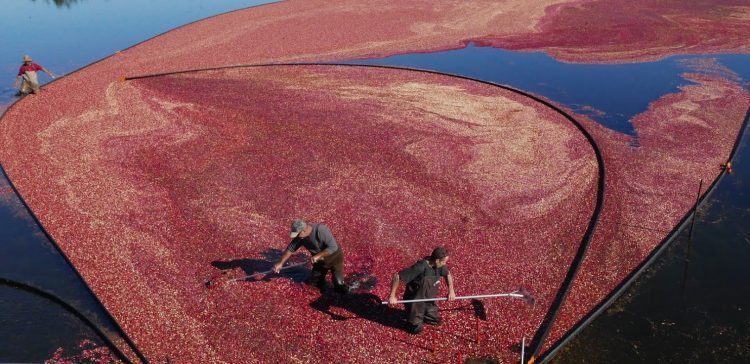
The Cranberry World of Southeastern Massachusetts and Cape Cod
By Shelley Rotner
Have you ever noticed cranberry-colored fields off the highway in the distance while driving to Cape Cod in Massachusetts? Those fields are cranberry bogs. Cranberries are one of the native fruits in New England.
There’s such a multitude of cranberry farms dotting the area, just at the neck of the cape, that there’s even a road called the Cranberry Highway.
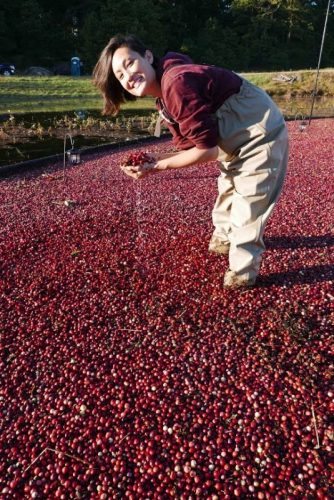
I was always curious and interested in getting a closer look. I finally found the time to make this a destination. Not only did I get a close look at cranberry bogs, but also I even got to put on waders and get knee-deep into a bog surrounded by hundreds of bobbing berries.
I was not disappointed. I was struck by the berry beauty that formed a mosaic of varying shades of red, crimson, rose, pink, and white depending on the ripeness. I got to rake, touch, harvest, and eat these berries in every which way!
400 Years of Cranberry
Cranberries have been around for a long time, in fact, for over 400 years! They grew wild before the Pilgrims were on the scene. Now they’re considered to be a superfood because of the phytonutrient health benefits.
They act as disease-fighting antioxidants and have anti-inflammatory properties. The Native American Indians made the original energy bar by mashing cranberries with ground deer meat. They called it pemmican.
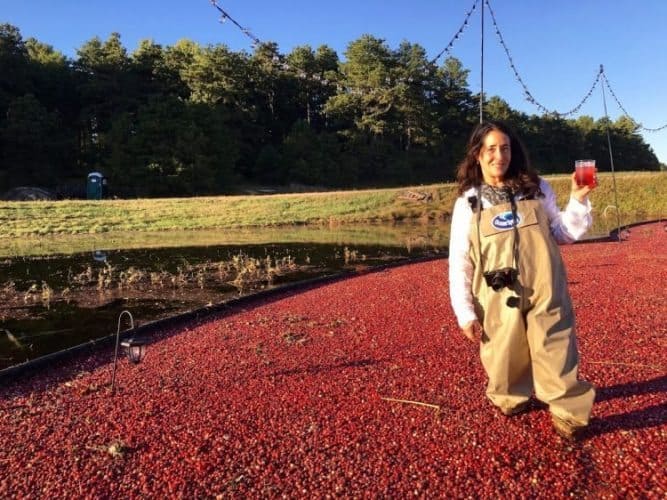
The Indians used cranberries in a number of other medicinal ways.
They made poultices, and used the berries as “blood purifiers, as laxatives, to aid stomach cramps and as an antibiotic for arrow wounds. Today, we’ve incorporated cranberries into our lives, not just as a Thanksgiving side dish.
I learned a lot more about cranberries. The berries turn from white to different shades of red as they ripen before harvest. They can be either wet-harvested or dry-harvested.
When wet harvested, water reels, commonly known as “egg-beaters,” loosen the berries from the vines. They float to the surface because of the air pockets in their interior construction.
Cut the Cranberry in Half
Cut a cranberry in half and you can see why. “Booms” round up the berries, which are lifted by a conveyor or pumped into a truck and transported to a processing station for cleaning.
Then, the berries are graded and screened based on color and the ability to bounce. Soft berries will not bounce and are not desirable. These are wet-harvested cranberries and are used for juices, sauces, or as ingredients in other processed foods.
Dry Harvesting Too

Dry harvesting involves using walk-behind machines to rake the berries off the vines into boxes or bags. In the old days, wooden rakes were used and look like beautiful antiques although still functional.
Dry-harvested cranberries are used to supply the fresh fruit market. These cranberries are most often used for cooking and baking.
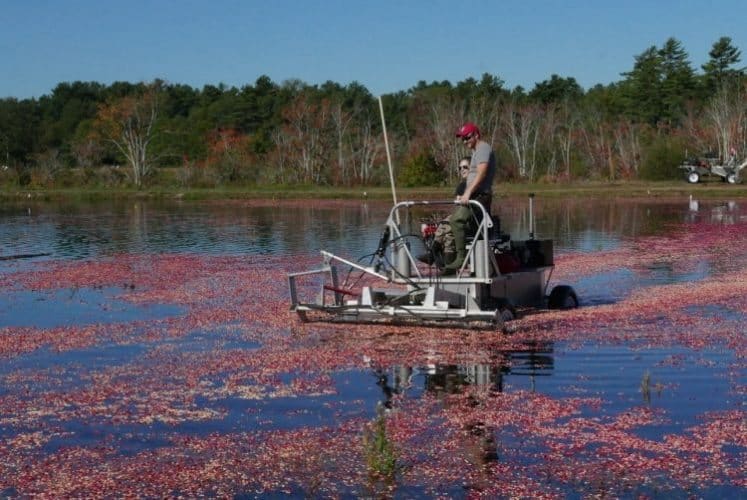
When we think of cranberries we think of Ocean Spray. It’s hard not to.
They seem to have a monopoly on the market although there is a move now to industrialization.
Besides eastern Massachusetts, cranberries are grown in Wisconsin, Oregon, parts of Canada, and South America. Ocean Spray started harvesting and processing in 1930.
There were three main growers then and today, there are over 700 families that have formed a North American Cooperative. The same families that grow the cranberries own the company.
Gilmore Cranberry Family
We met an impressive six generations of the Gilmore Cranberry Family. The matriarch of the family, Sue Gilmore, says the fruit is in her blood. Born on a bog! They love what they do and embrace this life with a generosity of spirit.

We shared in a lovely harvest celebration that they called a “bog to table” event. We had cocktails in a bog. We drank Cape Codders.
And then, we had dinner by the bog. We ate cranberry hummus, greens with cranberries, and pulled pork with cranberry relish. For dessert, we had cranberry apple pie!
It was not overkill, but a nice immersion in the diversity of the cranberry. And, it was good to remember how healthy they are for you.
I also visited a small family owned and operated cranberry farm in Acushnet, Massachusetts. At Stone Bridge farm, Joanne and Scott Harding planted their three acres of cranberry bogs 25 years ago. They noticed a trend toward agritourism and decided to give it a try.
Harvest begins in early October when the bogs are flooded and goes through the fall. They give farm tours. Visitors get a chance to experience what it’s like to be in a bog and to rake the berries. It’s true down-home fun.
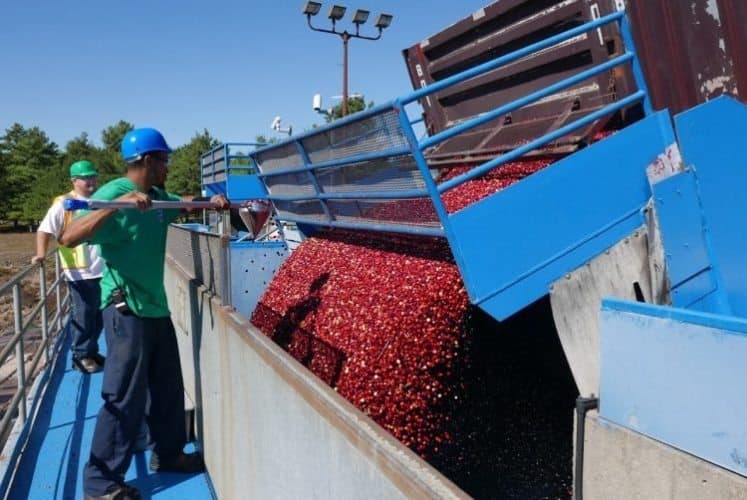
A Cranberry Festival
I also got to experience the annual old-fashioned family Cranberry Festival celebrating the harvest sponsored by the Cape Cod Cranberry Growers and Ocean Spray in Wareham, Massachusetts.
It was a great opportunity to see and learn everything about cranberries. The setting was next to a bog; with of course, bog tours and waders for all. You could learn about how cranberries grow, how they’re harvested, and taste cranberry-based foods.
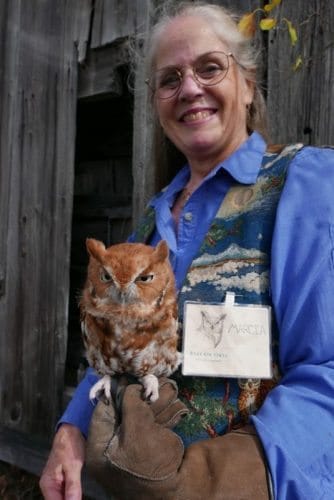
There were live cooking demonstrations of pilgrim cookery. For the adventurous, there were helicopter rides for birds-eye views of the bogs. There were 40 exhibitors presenting educational and historical displays.
For the kids, there was a huge sand dune to climb and wagon rides. What stood out for me was the live owl program. Marcia and Mark Wilson introduced many owl species for a close look and informational traits.

I’ll never be able to eat cranberries again without thinking about the memories of being in the heart of Cranberry Country and getting to know the farmers.
The flat landscape with the red blush forming geometric and elliptical shapes is like an impressionistic painting that will be forever in my mind.
AD Makepeace Co, the World’s Largest Cranberry Growers
- Ipswich, Massachusetts, Home of Famous Crane Beach - October 26, 2021
- Great Slices of History in Yucatan - August 23, 2019
- Stowe, Vermont: Bring On the Snow! - March 15, 2018





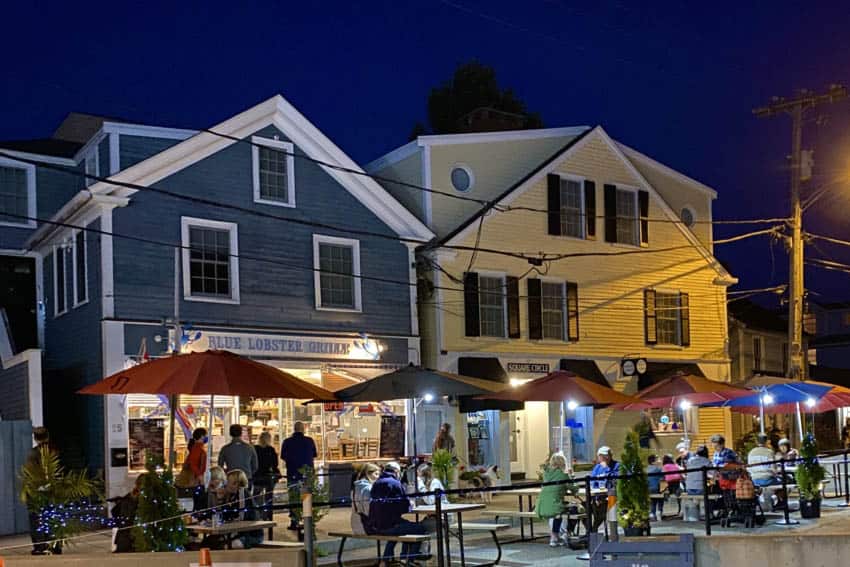
Yummilicious! I would like to visit this cranberry lands, grab fresh and juicy berries and relish it. When I had a stay at hotel in Billings Montana, the breakfast had a tasty cranberry desert which I fell in love with. I love its juice too. I am planning to visit one of the weekends.